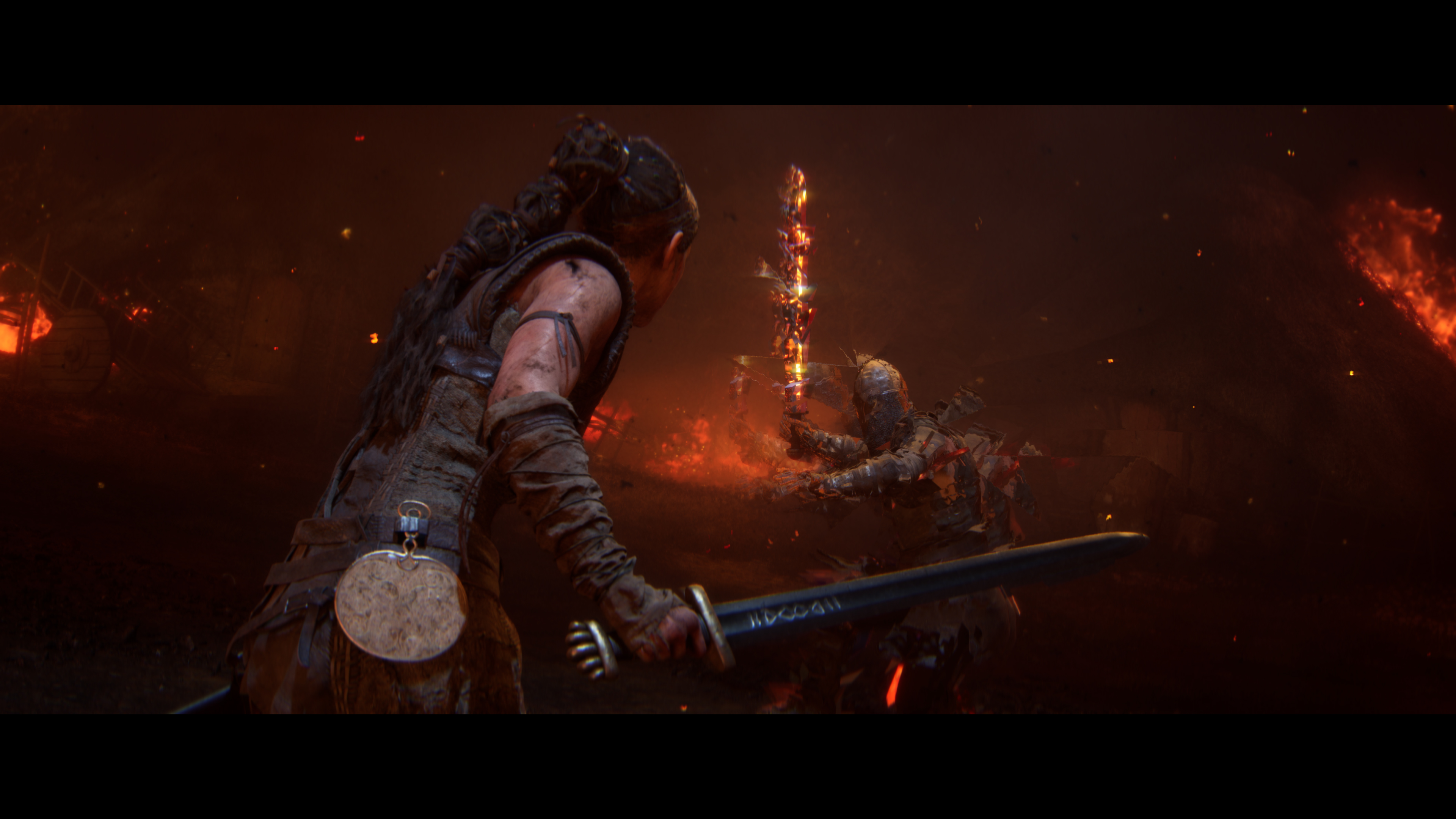Hellblade 2's combat is inspired by one of Game of Thrones' most brutal battles: "We wanted to recreate it in-game with full control from the player"

Senua's Saga: Hellblade 2 makes a great first impression. Last month, I visited Ninja Theory to get my hands on the upcoming Xbox Series X game ahead of its release of May 21 and there's one sequence of events that is still seared into my memory. Towards the end of an early chapter, you infiltrate a rite of fire and blood – an oppressive, cinematic section of play that concludes with Senua stumbling into a massive battle between Viking slavers and victims desperately fighting to escape. What happens next is a whirlwind of clashing blades and burning bodies, evocative visuals and harrowing brutality.
If we put fidelity to one side for a second, combat is undoubtedly where Ninja Theory has exercised the most growth between Hellblade: Senua's Sacrifice and Senua's Saga: Hellblade 2. Where the original game was a little stilted once swords were drawn, the sequel is a far more fluid and responsive affair – sharply reactive, with Senua translating panicked light and heavy attack, dodge and parry, inputs with disarming physicality. I was trying to appreciate all of this in the midst of a truly chaotic fight, an assault where I was never really sure who I would face next.

There is method behind these messy battles. Combat director Benoit Macon tells me that "Battle of the Bastards from Game of Thrones was a reference from the beginning." If you aren't familiar with the penultimate episode of season six, it's an enthralling sequence where Jon Snow pushes his way through a whole slew of enemies – taking foes on one at a time in amongst the carnage. "He's in the middle of this battle and just reacting to everything that is thrown at him. When we started development, our ambition was to recreate that in-game with full control from the player."
It would appear that Ninja Theory has been successful in that respect. Hellblade 2 features one-versus-one combat encounters, where focus is drawn to a single combatant as you lock into a deadly dance of sorts – and there is an almost choreographed nature to combat, given how fluidly animations weave together. "The reason we opted for one-on-one combat is because we want Senua to feel overwhelmed in every encounter."

"We think that a sense of brutality, a sense of struggle, is reinforced in one-on-one combat. You never know when something else is coming, so you're always wondering what's going to happen." Macon means that literally, by the way. Combat has this seamless quality where you might begin a fight with a cloaked viking only to find them drawn into another conflict by an NPCs who stumbled into them while fighting elsewhere on a battlefield; Senua might go in for a killing blow, only to find a different enemy swing in from out of camera and draw her attention. Combat is full of life, despite it being so thoroughly brutal.
"Battle of the Bastards is complicated," Macon continues. "There is something in every second of it. So we had to create a big pool of animations that can trigger from anything. "If Senua gets hit, it triggers something; if she kills an enemy, it triggers something different and so on, building up these stories in every battle we have created." For Ninja Theory to achieve this, it had to spend 75 days recording stunt performers on motion capture stages – capturing every single element of combat so that it can be fed back into Unreal Engine 5 and translated directly to the game without any manipulation or touch-ups. "Our guiding principle is 'What you see is what you get.'"
This article is part of our Big Preview of Senua's Saga: Hellblade 2. There you'll find more hands-on impressions and exclusive insight into the making of Xbox's most important exclusive of the year.
Weekly digests, tales from the communities you love, and more

Josh West is the Editor-in-Chief of GamesRadar+. He has over 15 years experience in online and print journalism, and holds a BA (Hons) in Journalism and Feature Writing. Prior to starting his current position, Josh has served as GR+'s Features Editor and Deputy Editor of games™ magazine, and has freelanced for numerous publications including 3D Artist, Edge magazine, iCreate, Metal Hammer, Play, Retro Gamer, and SFX. Additionally, he has appeared on the BBC and ITV to provide expert comment, written for Scholastic books, edited a book for Hachette, and worked as the Assistant Producer of the Future Games Show. In his spare time, Josh likes to play bass guitar and video games. Years ago, he was in a few movies and TV shows that you've definitely seen but will never be able to spot him in.


